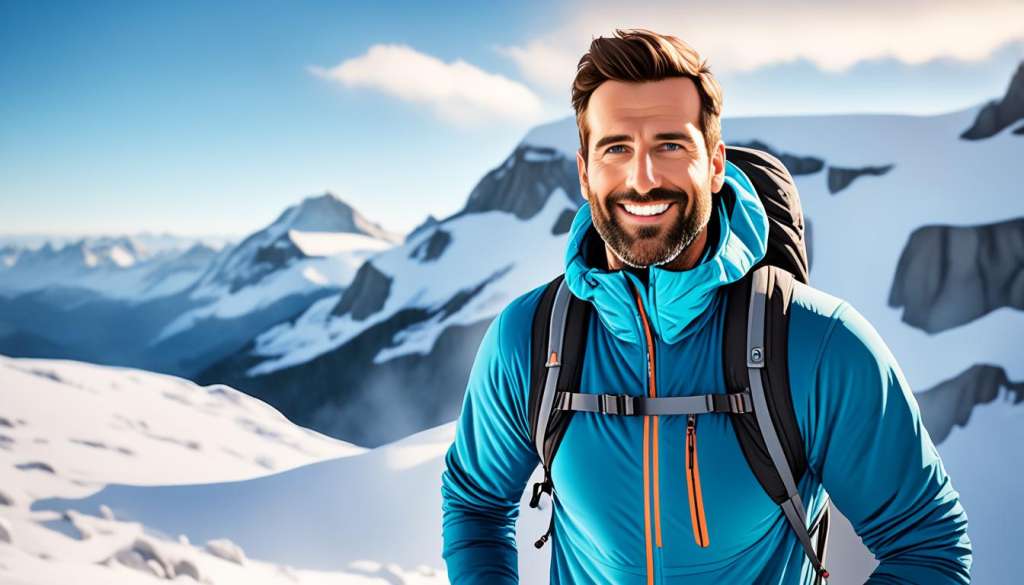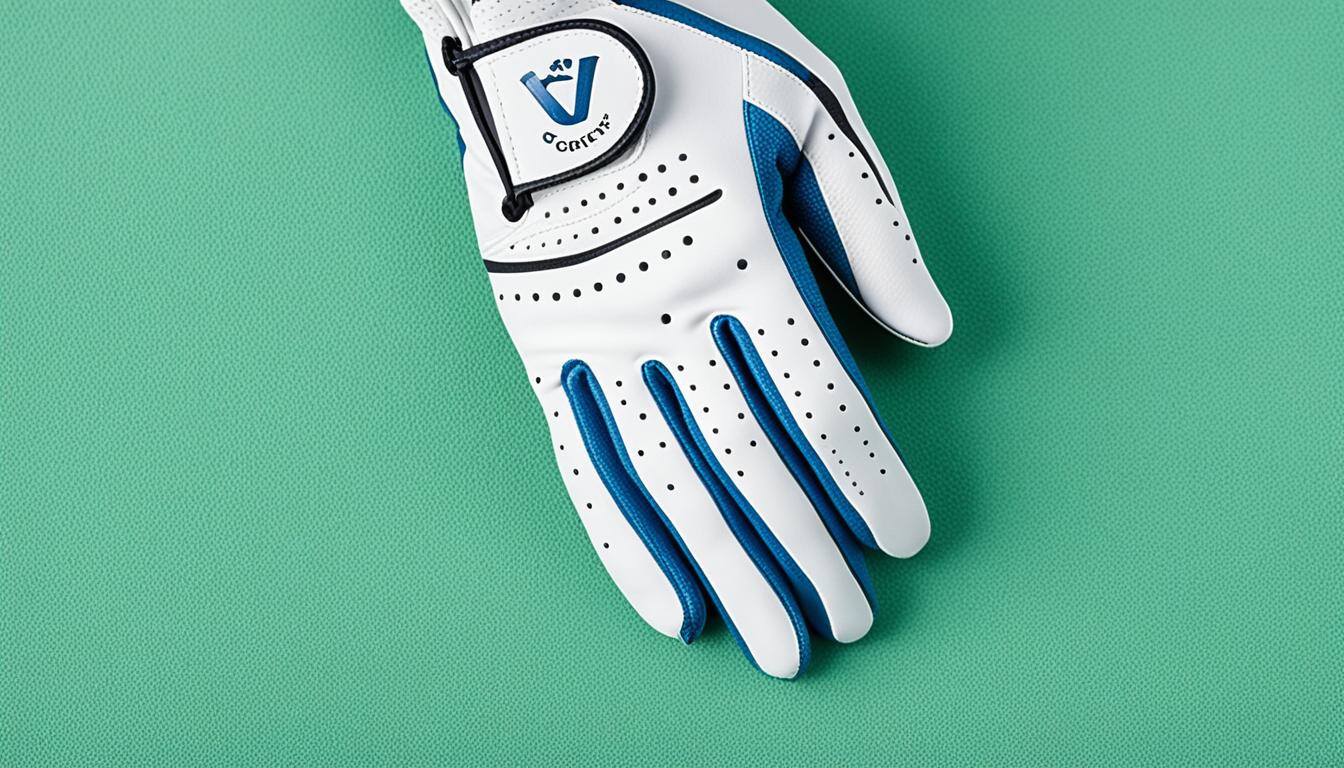Learn to master fashion layering with this detailed guide. By understanding how to layer outfits, you’ll boost your style and make versatile looks for any event.
Key to successful layering is outfit composition. Begin with a thin base layer, then add mid-layers for warmth. Finish with a stylish outer layer. This method lets you adjust to temperature changes while showing off your unique style.
Style mastery means knowing how different pieces work together. Mix textures, play with sizes, and choose versatile clothes to add depth and interest to your layered outfits. With time, you’ll get better at picking pieces that highlight your personal style.
This guide covers the basics of fashion layering. You’ll discover how to pick the right base layer and accessorize your look. You’ll learn to balance style and function, making outfits that are both comfy and stylish in any weather.
Understanding the Fundamentals of Layering
Layering basics are key to making outfits both stylish and practical. Mastering these fashion principles lets you change your look for different temperatures and places. Let’s dive into the main parts of layering and how to use them well.
The Purpose and Benefits of Layering
Layering is useful for both keeping warm and looking good. It helps control your body’s temperature all day. Plus, it makes your outfit more interesting by adding different textures and depths.
Key Principles for Successful Layering
Here are the main tips for a great layered look:
- Start with a thin, breathable base layer
- Add insulating mid-layers for warmth
- Finish with a protective outer layer
- Mix textures and fabrics for visual appeal
- Play with proportions to create balance
Common Layering Mistakes to Avoid
Avoid these mistakes when layering:
| Mistake | Solution |
|---|---|
| Overwhelming bulk | Choose thin, lightweight fabrics |
| Ignoring silhouette | Balance loose and fitted pieces |
| Clashing colors | Stick to a cohesive color palette |
| Neglecting proportions | Vary lengths and shapes of layers |
Knowing these layering basics and avoiding common errors will help you make outfits that are both stylish and comfy. Try out different combinations to find your own layering style.
Selecting the Right Base Layer
Choosing the right base layer is key to staying comfortable and dry. It’s the first layer you wear and sets the stage for your outfit. Let’s look at what makes a base layer perfect for you.
Characteristics of Effective Base Layers
Good base layers are breathable and wick away moisture. These features help keep your body temperature steady and sweat off your skin. They should fit well but not too tight, allowing easy movement. This fit helps the fabric work better at wicking away moisture.
Fabric Choices for Optimal Moisture-Wicking
Not all fabrics are the same when it comes to wicking away moisture. Here’s a look at some popular base layer fabrics:
| Fabric | Moisture-Wicking | Breathability | Durability | Odor Resistance |
|---|---|---|---|---|
| Merino Wool | Excellent | High | Good | Excellent |
| Synthetic Polyester | Very Good | High | Excellent | Fair |
| Bamboo | Good | High | Good | Good |
| Cotton | Poor | Low | Good | Poor |
Fitting Considerations for Base Layers
The way your base layer fits affects how well it works. A snug fit is best for moisture-wicking and keeping warm. Here are some tips for a good fit:
- Choose a size that hugs your body without restricting movement
- Make sure sleeves and torso length are right to cover all skin
- For outdoor activities, add accessories like thin beanies and wool socks
Keep these tips in mind when picking your base layer. The right choice makes your layered outfits better. It helps control how visible you are and keeps you comfortable.
Mid-Layer Mastery: Insulation and Versatility
Mastering mid-layer techniques is key to getting the right warmth and style in your outfits. The mid-layer is your main insulation layer, keeping you warm and letting moisture out. It’s a crucial part of your outfit that affects your comfort all day.

When picking your mid-layer, look for fabrics that keep you warm and breathe well. Fleece, lightweight down, and synthetic materials are great choices. They offer great warmth for their weight and are perfect for outfits that change with the weather.
Try out different mid-layer styles to see what suits you best. A zip-up fleece jacket lets you control the temperature easily. A pullover sweater keeps you warm steadily. For your legs, go for loose knit wool leggings or mid-weight fleece pants to match your top layers.
| Mid-Layer Material | Insulation Level | Breathability | Versatility |
|---|---|---|---|
| Fleece | High | Excellent | Very High |
| Lightweight Down | Very High | Good | High |
| Synthetic Insulation | High | Very Good | High |
| Merino Wool | Moderate | Excellent | Very High |
The secret to great layering is choosing pieces that work well together and can be easily added or removed. By getting good at mid-layer techniques, you’ll have insulation that keeps you warm and looks good. This makes your outfit stylish and easy to adjust for any weather.
Outer Layer Essentials: Protection and Style
Your outer layer is your first shield against the weather. It’s important to pick weather-resistant fashion that protects and looks good. Let’s look at how to choose the right outer layer for different climates.
Weather-resistant Materials for Outer Layers
Choosing the right materials is key in weather-resistant fashion. Gore-Tex, nylon, and polyester blends are great for keeping out wind and rain. They’re also light, strong, and ideal for layering.
Balancing Functionality and Fashion
Choosing an outer layer doesn’t mean you have to give up style. Many brands now offer stylish pieces that work well in tough weather. Look for sleek designs with features like waterproof zippers and adjustable hoods. This way, you get a look that’s both fashionable and ready for anything.
Selecting the Right Outer Layer for Different Climates
Choosing the right outer layer is crucial for staying comfy. In cold places, go for insulated parkas or down jackets. For milder weather, a light shell jacket might be enough. Think about your activities and the weather in your area when picking.
| Climate | Recommended Outer Layer | Key Features |
|---|---|---|
| Cold | Insulated Parka | High warmth, water-resistant |
| Rainy | Waterproof Shell | Breathable, lightweight |
| Windy | Windbreaker | Wind-resistant, packable |
| Mild | Light Jacket | Versatile, layering-friendly |
Your outer layer is the last piece of your layering strategy. It should match your base and mid-layers and offer the protection you need. With the right outer layer, you’ll be set for any weather, without losing your style.
Layering Techniques Guide: A Step-by-Step Approach

Learning how to layer is key to making outfits that are both stylish and practical. This guide will show you how to layer your clothes step by step. It will improve your skills in putting together outfits.
Begin with a snug base layer. Pick a thin fabric that wicks away moisture and hugs your body. This layer is crucial for your outfit’s look and keeps you comfy.
Then, add a mid-layer for extra warmth. You can choose from a light sweater, a button-up shirt, or a thin cardigan. This layer helps keep you cozy and lets you adjust your outfit as the day goes on.
Your outer layer is the last piece to add. Choose a jacket, coat, or blazer that matches your style and protects you from the weather. This layer should be easy to take off if you get too hot.
Accessories are important in layering. Scarves, hats, and gloves not only make your outfit look better but also let you add or remove layers as needed.
| Layer | Function | Example Items |
|---|---|---|
| Base | Moisture-wicking | Tank top, fitted tee |
| Mid | Insulation | Sweater, button-up shirt |
| Outer | Protection | Jacket, coat, blazer |
| Accessories | Versatility | Scarf, hat, gloves |
Using image manipulation can help you see how your layered look will turn out before you put it on. Try different combinations to see what suits your style and body best.
Mixing Textures and Fabrics for Visual Interest
Mixing textures and fabrics adds visual depth to your fashion. By combining different materials, you can make eye-catching outfits. This shows off your style and creativity. Let’s look at how to mix textures and fabrics for stunning layered looks.
Complementary Texture Combinations
Pairing contrasting textures makes your outfit more interesting. Try smooth silk with rough denim or soft knits with structured leather. These contrasts add depth and draw the eye. Mix matte and shiny fabrics for more intrigue.
Incorporating Different Fabric Weights
Varying fabric weights is key for layer masking. Use lightweight fabrics as base layers and heavier materials as outer layers. A thin cotton shirt, a chunky wool sweater, and a medium-weight jacket work well together for a balanced look.
Creating Depth Through Texture Contrasts
To add visual depth, focus on texture contrasts. Pair smooth fabrics with textured ones, like a silky blouse under a nubby tweed blazer. This adds complexity and creates a rich, layered look. Mixing patterns and textures can also have a big impact.
| Texture | Fabric Example | Complementary Pairing |
|---|---|---|
| Smooth | Silk | Rough denim |
| Soft | Cashmere | Structured leather |
| Shiny | Satin | Matte wool |
| Textured | Tweed | Smooth cotton |
Mastering these texture mixing techniques will help you create visually interesting outfits. Remember to balance different textures and fabrics for a cohesive look. This adds depth and dimension to your style.
Seasonal Layering Strategies
Mastering seasonal fashion means adapting your layer styles to the changing weather. It’s important to create adaptable outfits that keep you comfortable and stylish all year. Weather-appropriate layering is key.
In warmer months, choose lightweight fabrics for your layers. Chiffon and linen are great for keeping your skin cool. Pair a sheer blouse with a light camisole underneath. Then, add a drapey cardigan for cooler evenings or air-conditioned spaces.
When it gets colder, switch to thicker materials. Cozy sweaters and insulated jackets are perfect for this season. Layer a turtleneck under a chunky knit sweater for extra warmth. Finish with a quilted vest for outdoor activities.
Think about your daily activities when planning your layers. If you’re moving between indoor and outdoor, choose removable pieces. This makes it easy to adjust your outfit as needed.
| Season | Base Layer | Mid Layer | Outer Layer |
|---|---|---|---|
| Spring | Light t-shirt | Cardigan | Light jacket |
| Summer | Tank top | Sheer blouse | Linen blazer |
| Fall | Long-sleeve tee | Sweater | Leather jacket |
| Winter | Thermal shirt | Wool sweater | Insulated coat |
By mastering these seasonal layering strategies, you’ll create versatile and stylish outfits for any weather. Experiment with different combinations to find your perfect layer styles for each season.
Accessorizing Your Layered Look
Boost your layered outfits with smart fashion accessories. These add both flair and function to your style. Let’s see how accessories can be style accents to finish your look.
Scarves, Hats, and Gloves: Functional Layers
Scarves, hats, and gloves are great for layered looks. They keep you warm and add style. Add a splash of color with a scarf over a neutral coat. Top it off with a trendy beanie or fedora. Leather or knit gloves protect your hands and match your outfit.
Jewelry: Enhancing Layered Outfits
Jewelry is a perfect style accent for layered looks. Layer necklaces of different lengths over sweaters or blouses. Add bracelets or bangles to your wrists. Statement earrings can highlight your face, balancing out the bulk below.
Belts: Defining Layered Silhouettes
Belts are key for shaping layered outfits. Use a wide belt to cinch a cardigan or blazer, creating a defined waistline. Thin belts are great with dresses layered under jackets. Try different textures and colors to add depth to your look.
| Accessory | Function | Style Impact |
|---|---|---|
| Scarves | Neck warmth | Color and texture accent |
| Hats | Head protection | Outfit topper |
| Gloves | Hand warmth | Coordinated detail |
| Jewelry | Personal expression | Visual interest |
| Belts | Waist definition | Shape creator |
Experiment with these fashion accessories to create unique layered looks. The key is balance. Use accessories to enhance your layers, not overshadow them. With these tips, you’ll become a pro at accessorizing your layered outfits.
Layering for Different Body Types
Mastering body-type layering can take your style to the next level. Clipping masks in fashion help create visual illusions with clothes. Your unique shape deserves flattering fashion techniques made just for you.
Petite figures look great with slim-fit layers that make you appear longer. Try fitted turtlenecks under blazers or long cardigans over skinny jeans. Taller folks can rock oversized pieces like chunky knits or maxi coats.
Curvy bodies shine with layers that highlight your best features. Try a fitted jacket over a flowy top. Balance is key in personalized style. Use belts to cinch loose layers at the waist, creating shape.
Mix textures like silk and wool for visual interest. Layering isn’t about hiding. It’s about enhancing your unique silhouette. Experiment with different combinations to find what makes you feel confident and stylish.
Source Links
- https://outdoorschoolshop.com/layering-guide/?srsltid=AfmBOookDI81zbKH2DBvJZhlO1xQcNKFlKe32yD88ZGi4Mw76DEpruxa
- https://bucklemybelt.com/blogs/news/the-art-of-layering-tips-and-tricks-for-creating-beautiful-outfits-in-any-season?srsltid=AfmBOoomWq4WTOoBLBeqM-AcSMpoM3cneFvLzaKvYUpebcTSd4AzPXBa
- https://dorisdaymd.com/blogs/dr-days-blog/how-to-layer-your-skincare-products?srsltid=AfmBOopxWoejOW_OVX2ikU3D_DtT2Oyd1aOri82sV2026UkHVykFtvLB

